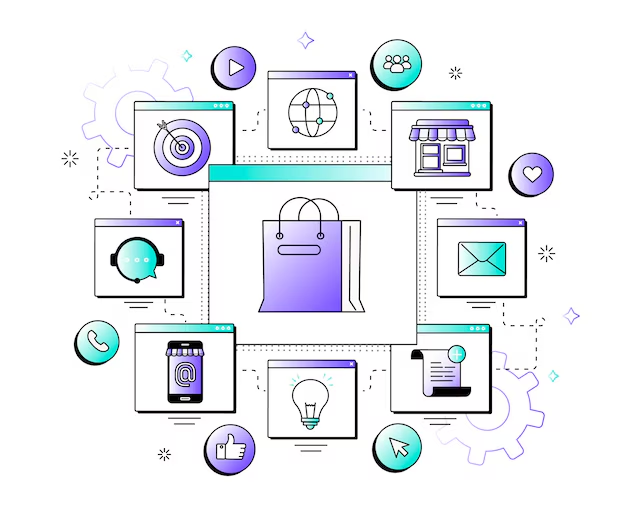
The future of e-commerce is a dynamic and multifaceted topic that encompasses various trends, technologies, and consumer behaviors. Here’s a structured outline and content ideas you can develop into a blog post:
The Future of E-Commerce: Trends Shaping the Next Decade
Introduction
- Briefly introduce the rapid evolution of e-commerce over the past several years.
- Highlight the significance of adapting to new trends for businesses to thrive in a competitive market.
1. The Rise of Social Commerce
- Overview: Define social commerce and its integration with platforms like Instagram, TikTok, and Facebook.
- Trends:
- Shoppable posts and live shopping events.
- The use of influencers to enhance brand visibility.
- Benefits: Discuss how social commerce creates a direct shopping experience and increases customer engagement.
2. Personalization and Customer Experience
- Overview: The importance of personalized shopping experiences.
- Trends:
- Use of AI and machine learning for tailored recommendations.
- Dynamic pricing and personalized email marketing.
- Benefits: Explain how personalization increases conversion rates and customer loyalty.
3. Mobile-First Shopping
- Overview: The shift towards mobile commerce as more consumers use smartphones for shopping.
- Trends:
- Progressive web apps (PWAs) for speedy, app-like experiences.
- Enhanced mobile payment solutions (e.g., Apple Pay, Google Wallet).
- Benefits: Discuss the importance of optimizing sites for mobile users and increasing accessibility.
4. Sustainability and Ethical Consumerism
- Overview: The growing demand for eco-friendly products and ethical brands.
- Trends:
- The emergence of circular shopping models (e.g., renting, reselling).
- Brands focusing on transparent supply chains and sustainable practices.
- Benefits: Explain how sustainability can enhance brand reputation and attract a loyal customer base.
5. Integration of Augmented Reality (AR) and Virtual Reality (VR)
- Overview: The use of AR/VR in enhancing the shopping experience.
- Trends:
- Virtual try-ons for clothing and accessories.
- AR displays that allow customers to visualize products in their space (e.g., furniture).
- Benefits: Share statistics on how AR/VR can reduce return rates and boost customer satisfaction.
6. Subscription Models and Recurring Revenue
- Overview: The shift toward subscription-based services across various sectors.
- Trends:
- Boxes tailored to consumer preferences (e.g., beauty, food, and lifestyle).
- Loyalty programs tied to subscription services.
- Benefits: Highlight the revenue predictability and deeper customer relationships that subscriptions can create.
7. Advanced Payment Solutions and Security Measures
- Overview: The evolution of payment options in e-commerce.
- Trends:
- Buy Now, Pay Later (BNPL) options that attract consumers.
- Increased focus on cybersecurity measures to protect customer data.
- Benefits: Discuss how offering diverse payment options can reduce cart abandonment and enhance trust.
8. Global Marketplaces and Cross-Border E-Commerce
- Overview: Opportunities and challenges in expanding internationally.
- Trends:
- The rise of global marketplace platforms (e.g., Amazon, Alibaba).
- Localizing content and payment options for different regions.
- Benefits: Explain how tapping into global markets can drive growth and diversify revenue streams.
Conclusion
- Summarize the key trends affecting the future of e-commerce.
- Encourage businesses to stay adaptable and innovative to navigate the evolving landscape.
- Suggest continuous learning and staying updated with e-commerce trends for long-term success.